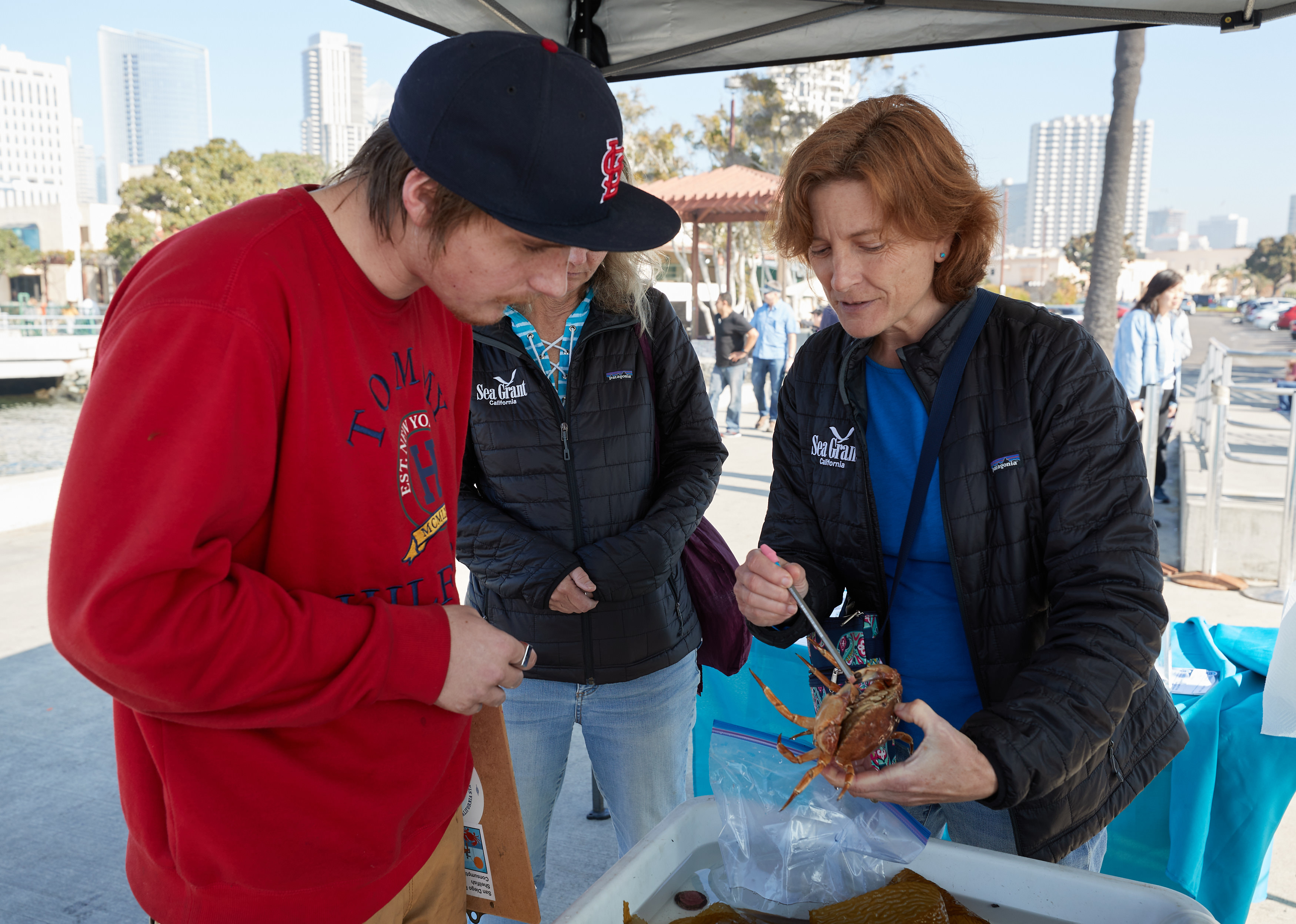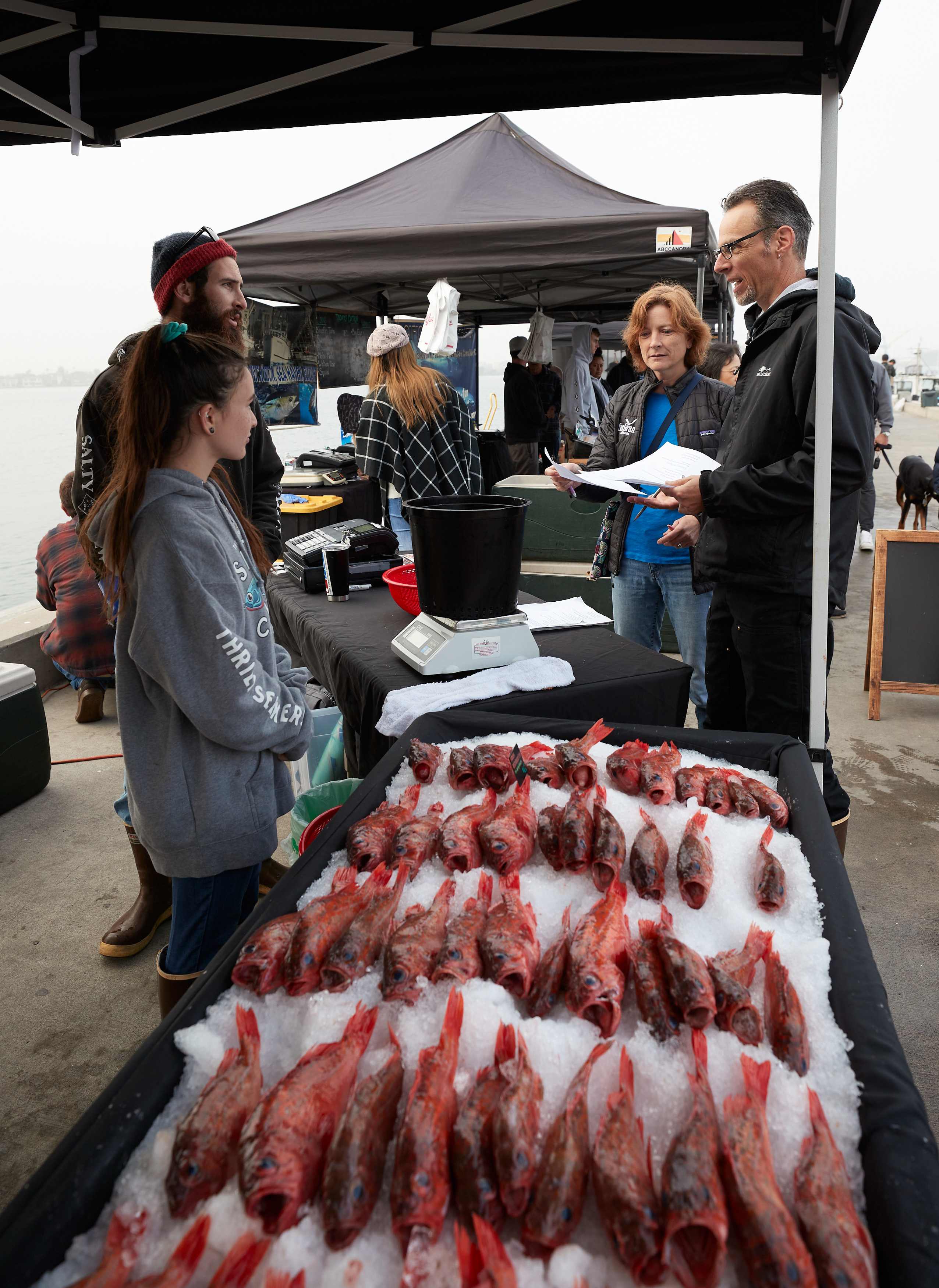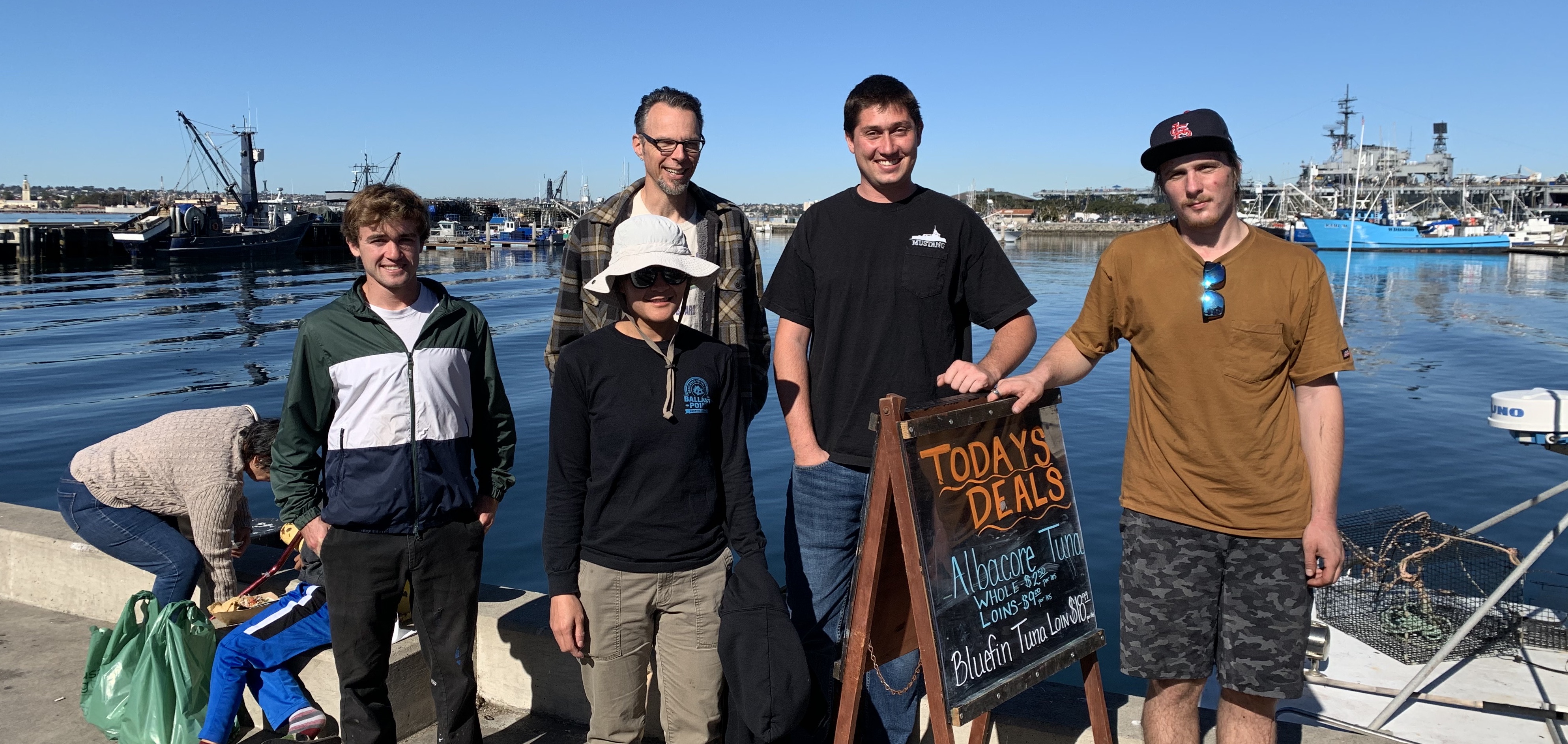If you sat down with these five people for lunch, you would probably struggle to figure out what they all have in common. There’s the gentleman with a degree in sociology from UC Berkeley carrying around a greenhorn’s guidebook. A young woman with a degree in mathematics who has been working as a data scientist. A local surfer and waterman from Carlsbad. The trained electrician with nearly a decade of experience in trades work. And a gung-ho young adventurer who journeys thirty miles out into the ocean on a jetski to catch fish.
Seated around a table, discussing the regulations and agencies governing coastal and ocean use, these five comprise the very first cohort of the California Commercial Fishing Apprenticeship Program, a new program developed by California Sea Grant in collaboration with commercial fishermen, scientists and educators from across southern California. Diverse in life experience, these five are united by a singular love of the ocean and a desire to make it a part of their livelihoods. In the words of one participant, Janelle, “If I can make a living working on the water, it’s worth checking out.” A sentiment echoed over and over again. “I’ve always loved the ocean, so why not try to make my living out there,” says Peter, another apprentice.

California Sea Grant Extension Specialist Theresa Talley teaches Brandon, one of the fishing apprentices, about a local crab species. Photo: Fred Greaves.
The end goal? For most of the participants it is to eventually captain their own boat while running their own fishing business. The freedom and independence of being their own boss on the high seas carries a strong allure. They see this program as the opportunity to get their feet wet in the commercial industry and start working their way up. “Until now, it was difficult to get trained to be a commercial fisherman,” says Theresa Talley, California Sea Grant Coastal Specialist and program co-coordinator. “You had to know a fisherman to get on a boat and start learning the basics. This program provides about 100 hours of foundational training in safety, seamanship, science, management and business, and then helps to connect these educated apprentices to veteran fishermen who provide 1,000 hours of paid on-the-job training.”
As these apprentices plunge into the world of commercial fishing, they will also provide a much-needed boost to the industry in the face of a looming crisis: a greying of the fleet. “While commercial fishing is experiencing several opportunities -- emerging and recovering fishery stocks, demand for locally sourced foods -- California’s commercial fishing fleet is ageing with too few younger, well-trained fishermen to take their place,” says Carolyn Culver, California Sea Grant’s Aquatic Resources Specialist and apprentice program co-coordinator. Sea Grant’s California Commercial Fishing Apprenticeship Program aims to address this by preparing interested young people for a career in commercial fishing in the 21st century.

The apprentices visited the Tuna Harbor Dockside Market as part of their Seafood Marketing and Business class. Photo: Fred Greaves.
This inaugural class of apprentices just completed phase one of the program: two weeks of interactive workshop training. They learned boating skills, first aid, and how to respond to emergencies on the water. They learned about the state, national, and international regulations governing the industry. Classes covered ecosystems, fisheries science, and data collection tools for assisting with management of the stocks. They studied the business side of fishing, as they will need the skills to market the fish after they catch it.
“Fishing today requires a diverse set of skills and knowledge,” says Talley, “it is far more than just dropping in your line or trap. Fishermen need to be able to navigate the ocean, a sea of complex regulations, and the latest market demands. We worked alongside fishermen to design a program that would contribute to a safe, responsible, and competitive industry, providing knowledge and skills that would help those new to commercial fishing.”
Next up, the students will move into the second phase of their apprenticeship: on-the-job training. Now that they’ve learned the basics, they will train under licensed commercial fishermen who will take them aboard as paid crew members for the next 6 to 12 months. Once they have completed one thousand hours of on-the-job training, each will earn a certificate of completion from the program.
“We are excited to see the apprentices become integrated into the fishing community, helping to maintain an important part of California’s cultural heritage,” says Culver. “While it certainly is not an easy profession, it is a viable one for those who have the passion and can ride the unpredictable waves of the ocean. The apprentices definitely have a passion for life at sea, even after hearing about the challenges of being a commercial fishermen in the 21st century, something that will undoubtedly help them make a splash into their new fishing career.”

The inaugural cohort of fishing apprentices. From left to right: Shane, Janelle, Peter, Alex, and Brandon. Photo: Theresa Talley.
Special thanks to those who contributed to the workshop training portion of the California Commercial Fishing Apprenticeship Program.
- AMSEA (Alaska Marine Safety Association)
- US Coast Guard Auxillary
- US Coast Guard Sector San Diego
- Alaska Sea Grant
- Tuna Harbor Dockside Market
- San Diego Fishermen’s Working Group
- Commercial Fishermen of Santa Barbara
- Santa Monica Seafood /Chesapeake Fish Co
- International Law Offices of San Diego
- American Tunaboat Association
- Birch Aquarium at Scripps Institution of Oceanography

